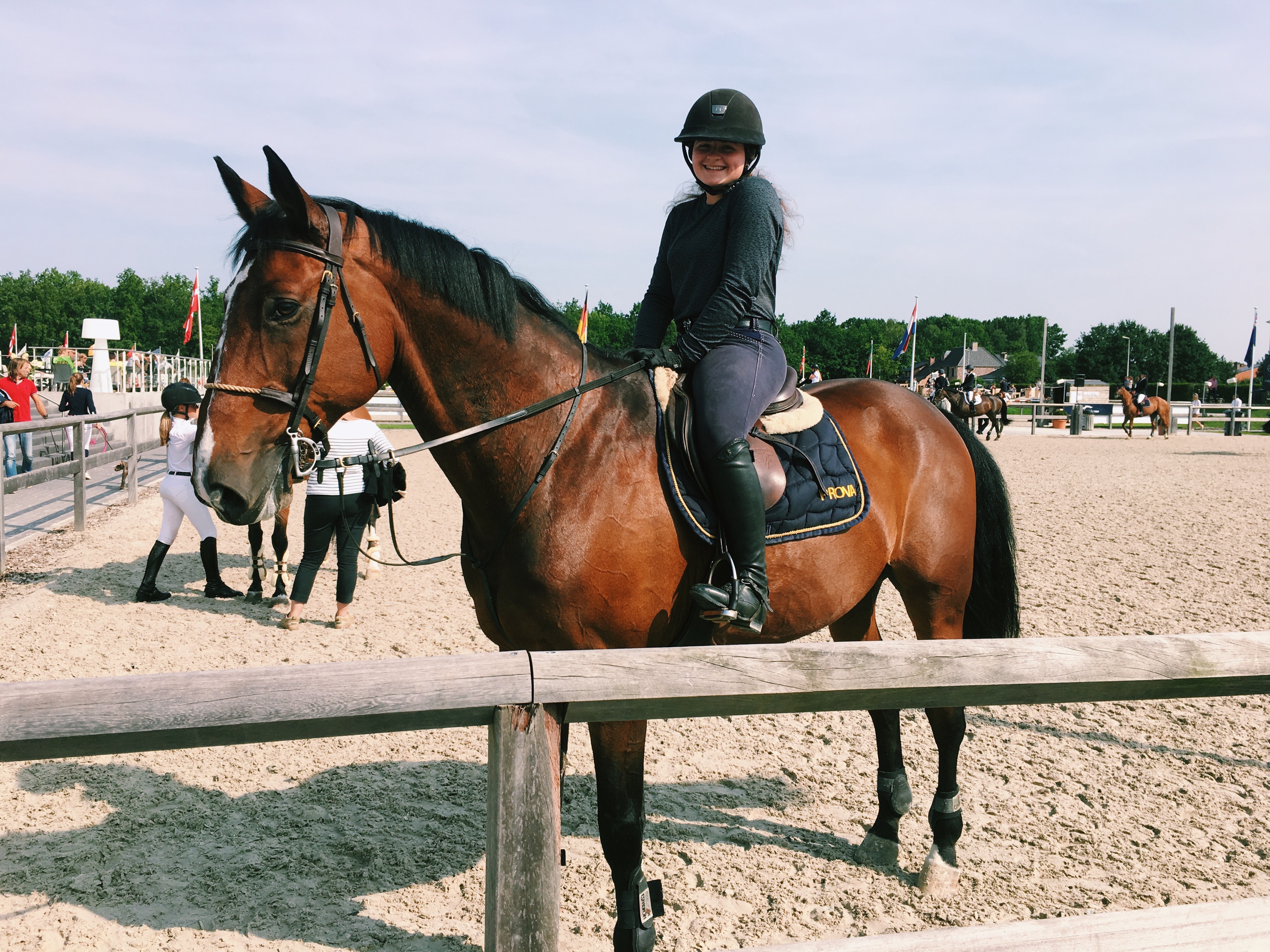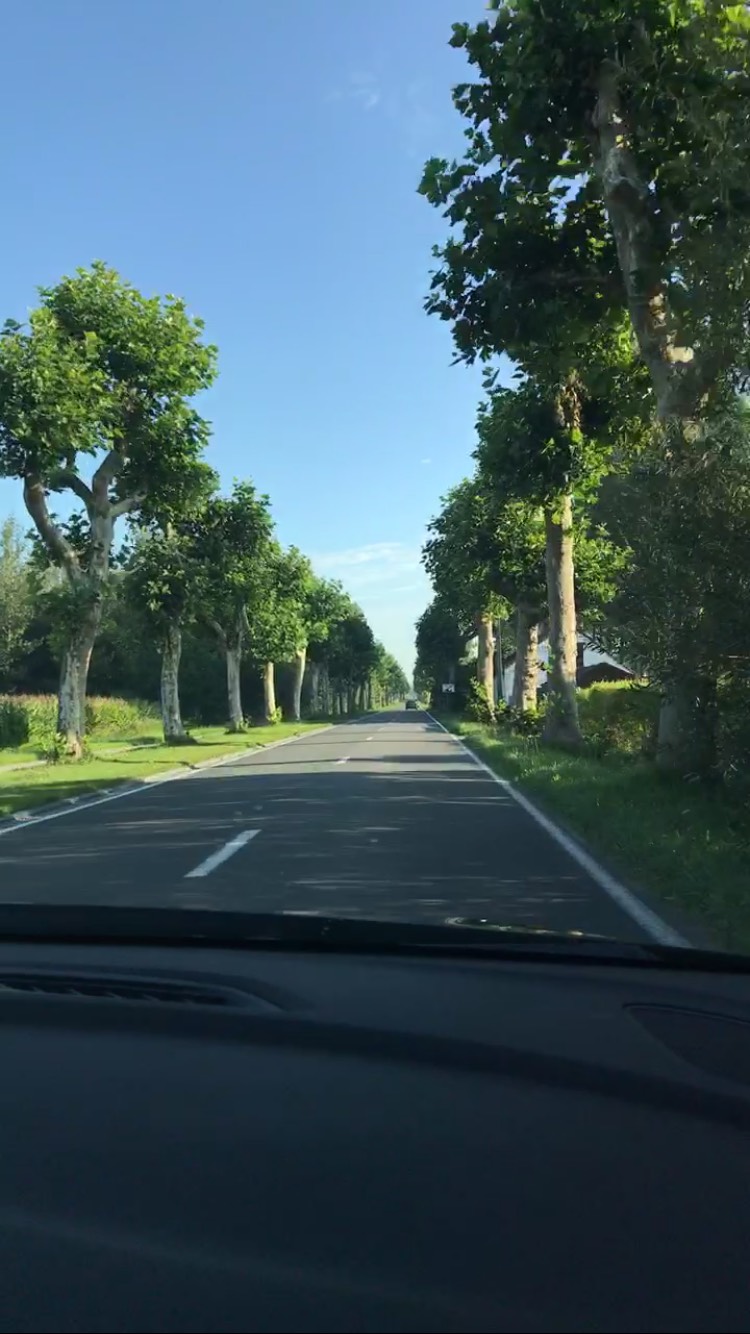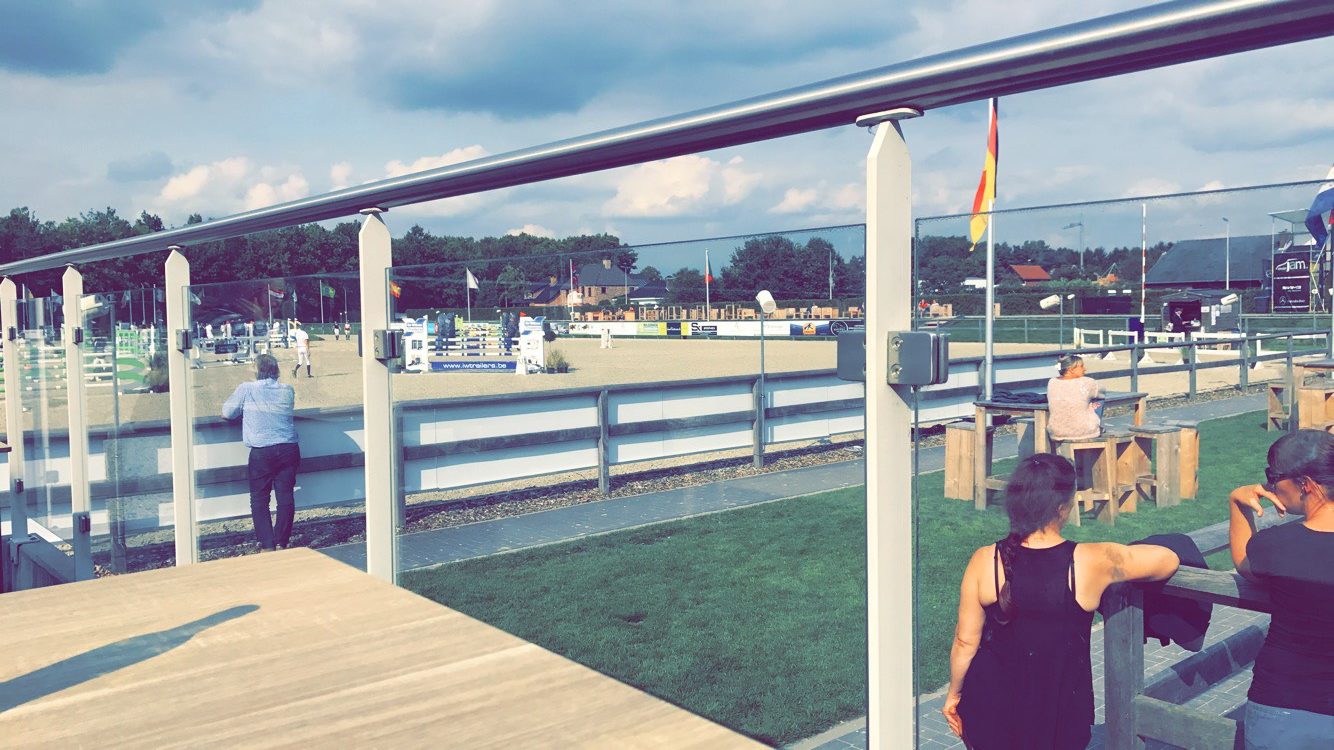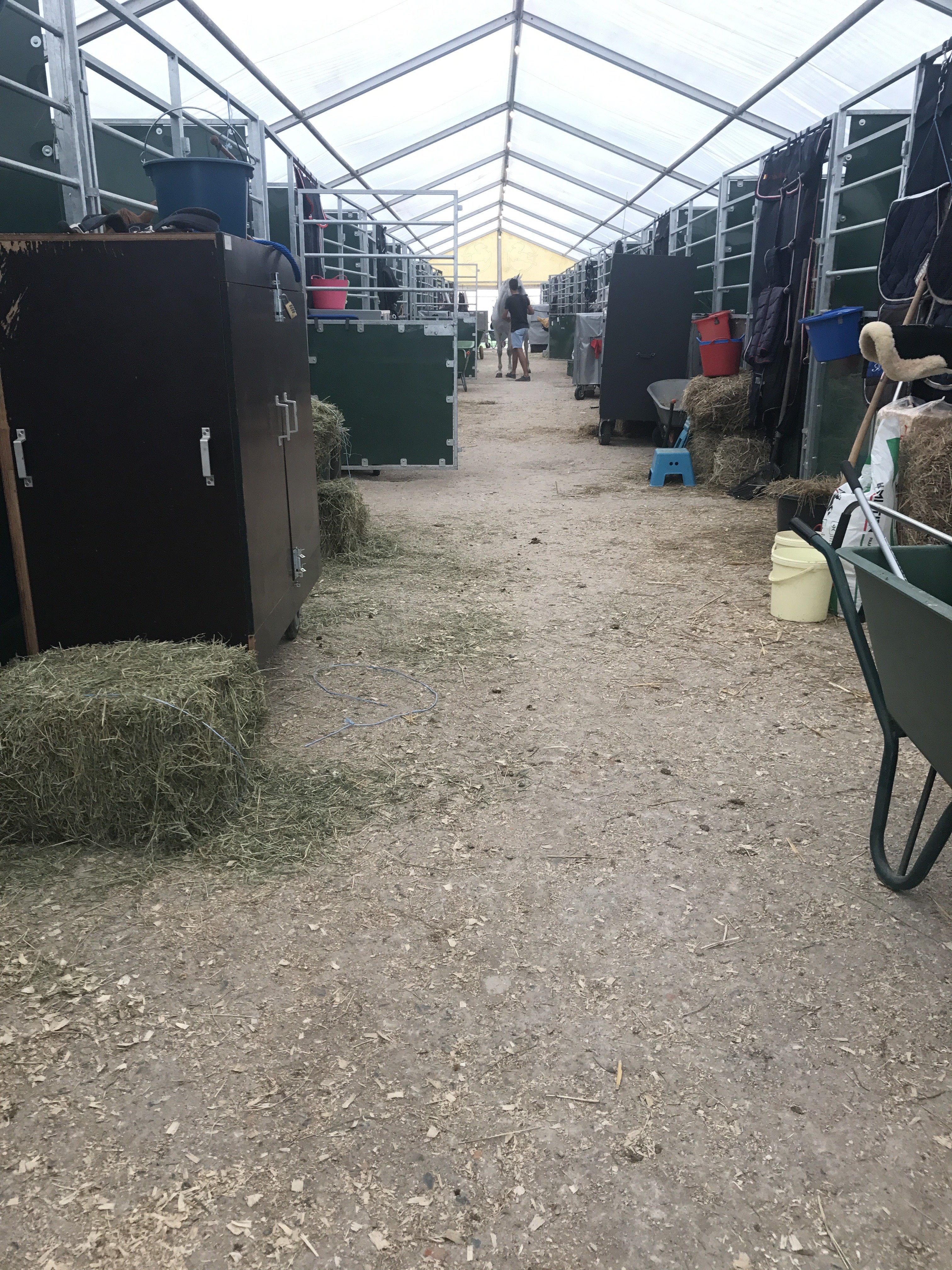
Photo courtesy of Dominique Gonzalez
JN photographer and junior equitation rider Dominique Gonzalez recently accompanied her dad, Grand Pix rider and trainer Terry Gonzalez, on a horse buying trip in Europe, and she took us along for the vicarious thrill! Thank you for writing, Dominique, and thank you for reading!
For many people, going horse shopping in Europe is on their bucket list. Luckily for me I’ve had the opportunities to travel abroad in search of new horses several times with my dad, Terry Gonzalez of T.M. Hills International. Being the trainer’s kid has several perks, one being able to travel wherever my father gets to go. My most recent trip brought me to Belgium and The Netherlands. We were scoping out horses to find a suitable equitation/jumper prospect and one or two Grand Prix horses.
The hardest part for me when traveling are the long flights. Sitting for more than nine hours at the time is agitating and boring. With the different time zones, we flew late afternoon and arrived early morning in Brussels, Belgium.
I was more than prepared when I decided to sport my breeches and an athletic shirt on the flight, so I could go directly to the barns. After getting our rental car, we drove an hour out, taking a few wrong turns along the way, to the first barn we had on our list.

Photo courtesy of Dominique Gonzalez
Driving through Belgium is completely different than driving anywhere in the States. The roads are smaller and more confusing, but the scenery makes up for everything we endured. When I looked left I could see a small village and looking right, more than likely, I caught sight of corn fields. The small one lane roads that brought traffic from both sides gave me the most heart attacks. You don’t know fear until you take a sharp turn and see a car driving the opposite direction straight at you with only a few feet separating you.
The barns here are very similar to what we have in the states, but almost all include an indoor for the harsh winters. Some barns are quite large and others are smaller with only a few stalls. To me horse shopping here was more exciting than shopping for anything in America. Here, you can show up to any random place and find a horse. The owners would offer you something to drink or eat at every barn and sit down to chat, sometimes for a large amount of time. There you can trade stories of different horses you’ve found and show videos of horses you personally have for sale.
The training system for riders is quite different in Europe. Most riders will start immediately on a horse or a pony jumper. Climbing the ranks steadily with no sure sign of stopping, since the only track to go is jumpers. There are no hunter or equitation classes available to test out a horse in those disciplines. Since many breeders and sellers don’t quite know what a hunter or equitation horse, you have to sort through many horses in order to find what checks every box on your list.

Photo courtesy of Dominique Gonzalez
Horses are bigger part of the culture here than they are in America, they are seen more as a cultural normality, while the average American citizen will tell you they’ve never seen a horse in person.
The horse show experience gave me a different feeling than all the other horse shows I’ve previously attended. There was more of a peaceful setting with the attachment of community. I was lucky enough to watch part of the Silver league, with the Junior Cup of Belgium running at Sentower Park located in Opglabbeek, Belgium.
The show consisted of a main ring, with a main area with a bar and an outdoor seating arrangement for spectators. There were several other rings that were used for schooling and smaller classes. It also has one of the biggest indoors I have ever witnessed, having three rings built in, and a multitude of tables and bleachers.
I had looked around trying to spot maybe one golf cart or dirt bike, but all I saw were bicycles, small motorized scooters, and people walking everywhere. It was a change of pace, with not needing to dodge golf carts left and right or making sure you had grabbed the correct red dirt bike from a group of 20.
The show remained quiet throughout the day, with only the sounds of horses getting worked and people chatting happily and the occasional dog barking somewhere.

Photo courtesy of Dominique Gonzalez
To get your horses anywhere they traveled in lorries, not the traditional horse trailer seen in America. Its more efficient this way, saving on gas and easier travel through the small and twisting roads.
Compared to the show barns at regular horse shows, the ones here were quite different. They don’t have regular tack trunks or extravagant set ups, they keep their equipment in large metal boxes that can hold everything they need. As well as only hanging their barn curtains on the stalls they had.

Photo courtesy of Dominique Gonzalez
Riders walk on horseback through the entire aisle way till they reach their proper stalls. This had given me anxiety seeing them stay on and casually walk through. I laughed with one of the riders I befriended on my time here when I dismounted outside of the barn and he had given me a look of surprise, with my response being, “I guess it’s an American thing.”
The language barrier was quite something to get used to. I have always been able to speak to anyone at a horse show, with it either being English or Spanish. But here I had no clue how to speak a single word of Dutch. Luckily for me, several people I had spoken to knew a few words in English so we could hold a conversation. I even had a rider help teach me different phrases like “buiten” (outside) and “binnen” (inside), so that I could just barely communicate my way through a busy schooling arena.
In our circle, I caused several moments of laughter when I would butcher Dutch words in a conversation. Thankfully, many found it hilarious and charming how the American was trying to fit in.
The riding style I saw in each rider matched together coherently. A deep seat, with hands low and a heavy, consistent leg. I rarely ever saw someone half-seat around the course or be overly soft. From the riders, I saw many were very in tuned with their horses, and held themselves together if they made any mistake. From speaking to riders, I found a majority of them had brought their horses up the ranks themselves, starting off young and continuously giving them show mileage. Others were lucky enough for this to be a family business, getting even more insight into what they have to do on a daily basis.
I even met a son of a rider and horse owner with the same background as me: having their father be their trainer, and knowing the horse you absolutely love right now may be sold the following week. We shared the same experiences and knowledge that when you sell one, another will come along that needs training just the same. The funny part was, I had fallen in love with his horse!

Photo courtesy of Dominique Gonzalez
Truly, this trip was what I needed to remind me of what the sport is all about: you’re there for the horses. The love and passion we all hold for our horses is what drives us to keep going. I always saw owners loving the horses they had, they held a spot for their horses in their heart like we in the community all do. We all love what we do no matter how much we complain about things sometimes. Even with a language gap and a sea dividing us we’re all the same at the end of the day.
